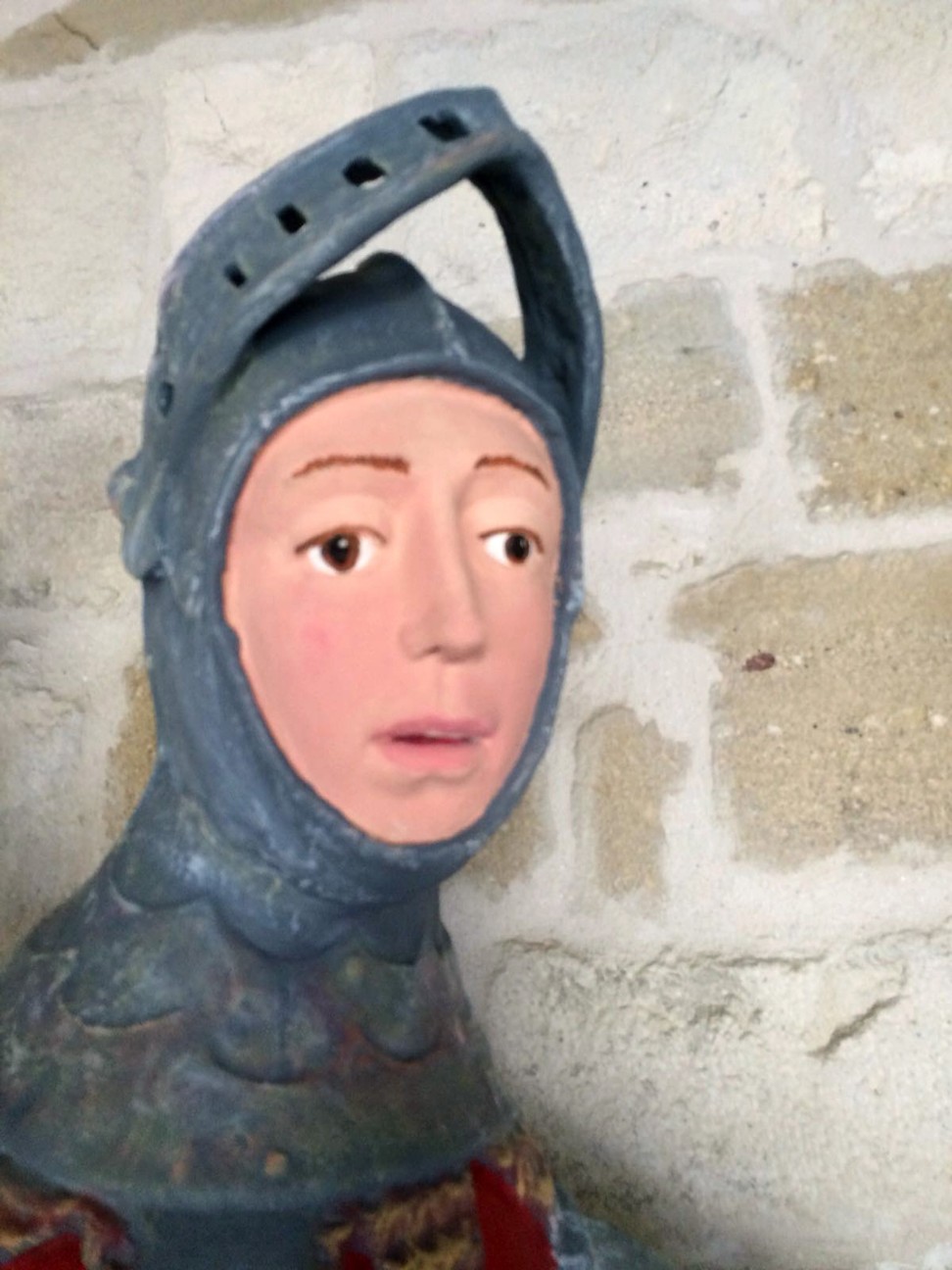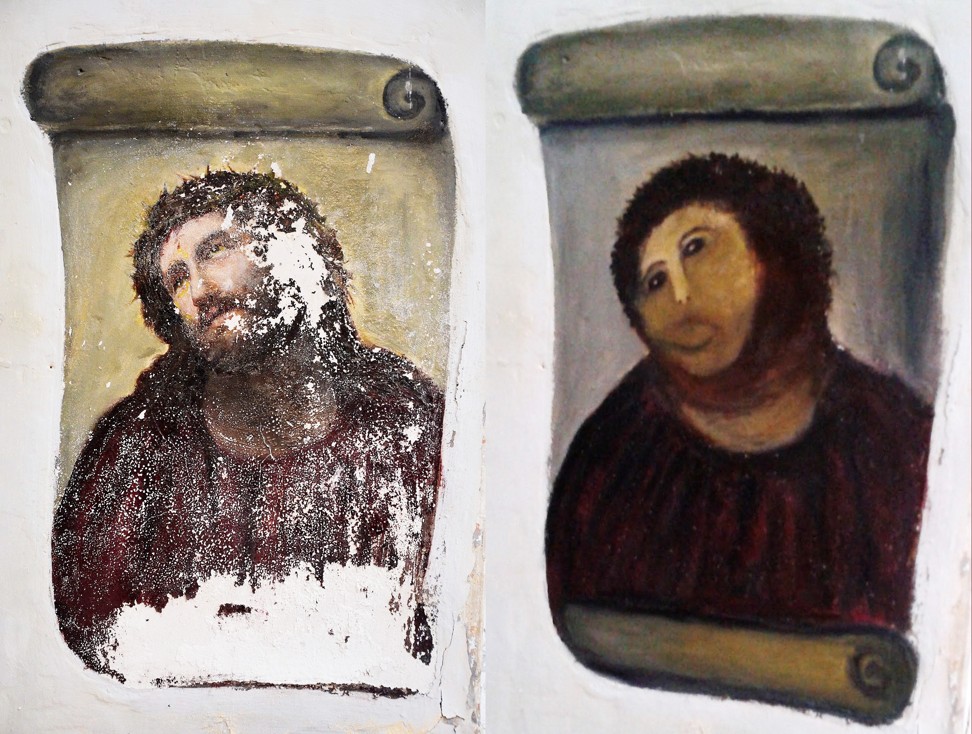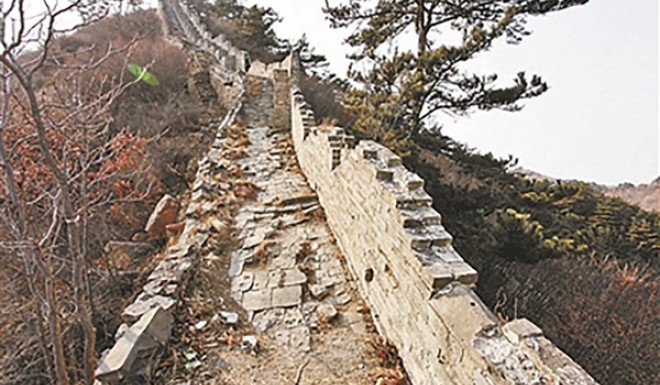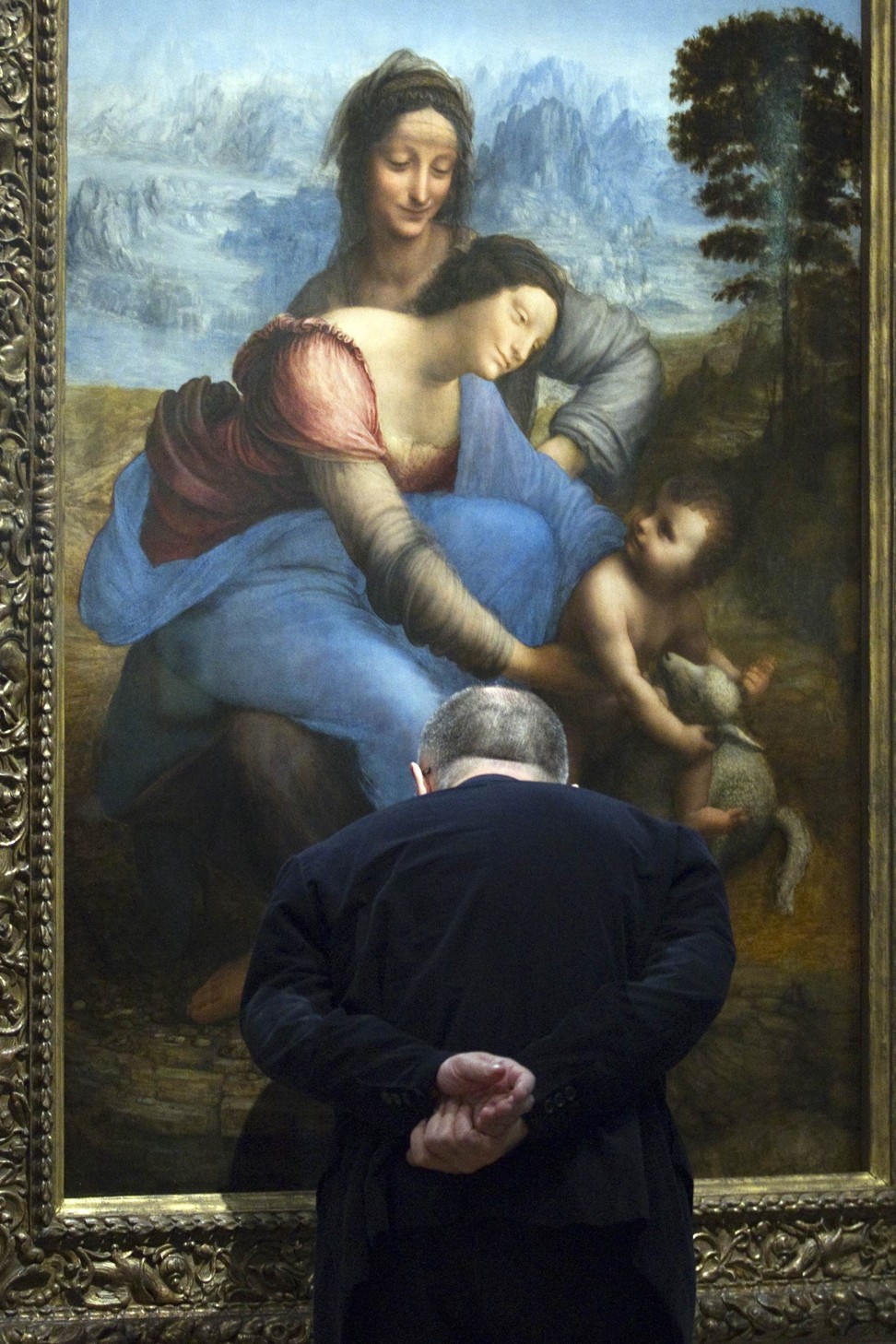
From Monkey Jesus to SpongeBob Castle: 8 of the worst restorations of artworks and historic buildings
Many priceless historic works have been ruined by well-intentioned but unqualified artisans. That list now has a new entrant, with photos of a garishly restored historic stone Buddha appearing on Chinese social media last week
Restoration is an essential step in the conservation of old sculptures, paintings and buildings. But without thorough knowledge, the correct materials and attention to detail, such rejuvenations can have unintended results – as proved once again by the botched restoration of a historic stone Buddha in southwest China.
The work on the Song dynasty (960-1279) relic in Anyue township, Sichuan province was actually carried out in 1995 but only came to light last week when photos of the statue went viral on social media. The “restored” sculpture had been covered with garish colours and appeared cartoonish.
China’s technicolour Buddha joins botched repairs wall of shame
The photos were published by cultural relics enthusiast Xu Xin on his Weibo profile. Xin has spent the last four years working at the Dunhuang grottoes in Gansu province, one of the country’s most celebrated Buddhist sites. The posts prompted angry online criticism and were instantly forwarded more than 15,000 times, with many commenters condemning the “restoration” and demanding an explanation from the local government.
In response, authorities explained that the restoration job was done voluntarily and paid for by locals in 1995 and that the government had stopped the work upon finding out, without specifying whether other sculptures had been given similar treatment.
“Hundreds of years later, when our later generations see this, they’ll mistakenly believe that this is the best our civilisation has got,” one internet user wrote.
This is far from the first time a restoration has drawn fire. Here are some of the most infamous cases in recent memory.

St George figure, Spain
Restoration is an essential step in the conservation of old sculptures, paintings and buildings. But without thorough knowledge, the correct materials and attention to detail, such rejuvenations can have unintended results, as this week’s news of a second botched art restoration in Spain reminds us.
In a well-intentioned move, a church in the small northern Spanish town of Estella took the initiative to restore a centuries-old wooden figure of St George, the patron saint of England. However, the arts and crafts teacher hired by the local parish priest for the job turned the statue into a cartoonlike figure.

Social media users made fun of the change, and noted the strong resemblance to the cartoon character Tintin. Others spotted a resemblance to Playmobil toy figures.
Still others, including conservation groups, were outraged. “We cannot tolerate more attacks on our cultural heritage … This shows a frightening lack of training of the kind required for this sort of job,” thundered the Spanish Arts Conservation Association.

Castle of Matrera (Castillo de Matrera), Spain
When part of the 9th century Matrera Castle in Villamartin, southern Spain, collapsed, restoration was required. But instead of reassembling the shattered masonry to look as it did previously, the architectural firm in charge of the project built a wall to which it attached the old stones.
The restoration was criticised for the obvious difference between the old and the new stonework. That said, the architectural firm received the Architizer A+ Award, a distinguished architectural prize, for its work.
While the look of the restored castle might not appeal to all, it may have been the only option to save the ancient structure.

Christ fresco, Spain
This might be Spain’s most notorious restoration failure. In 2012, restoration transformed a 19th century fresco of the Christ by Elias Garcia Martinez into what critics called the “Monkey Christ”. Enthusiast Cecilia Gimenez, then 81 years old, brought her painting tools to the Santuario de la Misericordia in the city of Borja in northern Spain where the fresco is located.
Taiwan is an undiscovered market for collectors, says art fair veteran
Thinking that the Christ looked “tired”, she offered him a facelift in spite of lacking any qualifications, or the approval to do so.
The failed restoration soon became famous, and not all the reaction to it was negative. Tourists flocked to Borja to see the results of her work, boosting the village economy, and Gimenez was treated with sympathy – and even invited to art exhibitions and talks.

Great Wall, (Suizhong County section), China
After a stretch of the Great Wall in Liaoning province was found to be in danger of collapsing, local authorities rushed to preserve the Unesco World Heritage Site in 2016. However, the restoration did not go as planned.


Ocakli Ada castle (or SpongeBob castle), Sile, Turkey
The Byzantine Ocakli Ada (Ocakli Island) castle 70km from Istanbul, underwent years of renovation. When the work ended and it was unveiled to the public in 2015, there was criticism of the use of stones that looked brand new. But the public’s attention was drawn more to newly added windows which – from further away – made the castle’s tower look like SpongeBob, the American animated figure. Internet users dubbed the renovated castle a “SpongeBob memorial”, while a cultural commentator called it “a matter to cry over”.
Despite the controversy, those in charge of the project defended the restoration and instead pointed to years of neglect of the monument.

Virgin and Child with Saint Anne, Louvre Museum, Paris
Exhibited at the Louvre Museum in Paris, the Virgin and Child with Saint Anne painted by Leonardo da Vinci went for a clean-up in 2011. When the newly cleaned painting was unveiled, art experts were divided. Some said the painting had become brighter and no longer looked like the original. Other experts defended the museum’s decision.

Botched Tutankhamen beard, Egypt

